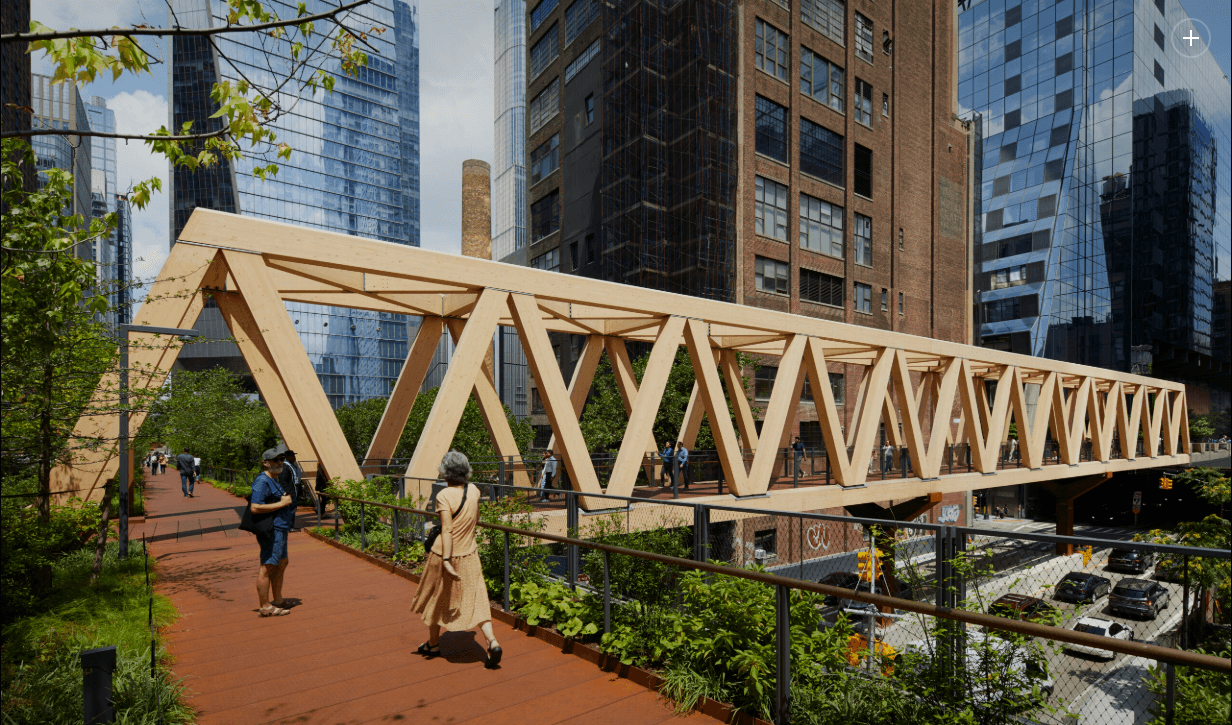

The High Line – Moynihan Connector by Skidmore, Owings & Merrill and Field Operations
As architects and designers navigate the complex interplay between sustainability and functionality, Yellow Cedar emerges as a vital material in modern architecture. It not only enhances aesthetic appeal but it also addresses pressing community needs. This remarkable wood, known for its durability and resistance to decay, is increasingly being utilized in commercial and communal projects that serve diverse populations.
In contrast to residential applications, where Yellow Cedar often enhances individual comfort and home aesthetics, its role in larger-scale architecture fosters connectivity and collaboration within communities. From vibrant public spaces to educational institutions, Yellow Cedar serves as a bridge between nature and design, inviting users to engage with their surroundings in meaningful ways.
Celebrated for its rich history and cultural significance, Yellow Cedar has deep roots in Indigenous practices, where it was cherished for its versatility and sustainability. As contemporary architects embrace this material, they are not only honoring these traditions but also creating environments that resonate with purpose and inclusivity.
Here, then, are three projects that exemplify the transformative power of Yellow Cedar in community settings.

Architect: Skidmore, Owings & Merrill and Field Operations
This 260-foot-long Timber Bridge is indeed constructed from Alaskan Yellow Cedar glulam, a material that exemplifies the emergence of engineered wood products in modern architecture. With its ability to be shaped into various forms, glulam offers unparalleled versatility, making it an ideal choice for striking architectural features.
Yellow Cedar glulam, in particular, stands out for its exceptional outdoor durability, requiring no additional coatings or treatments. The natural tannins found in the heartwood provide inherent resistance to decay and rot, ensuring longevity even in challenging environments. These performance properties, combined with its golden aesthetic appeal, makes Yellow Cedar the perfect material for exterior applications in modern architecture. The bold dramatic use of Yellow Cedar in this case resulted in a Manhattan pedestrian bridge that not only enhances the urban landscape of NYC but also supports the development of vibrant, sustainable environments where people can gather, socialize, and enjoy the outdoors.

Architect: Behnisch Architekten
Photo: Brad Feinknopf
This innovative downtown university building exemplifies the artful integration of Yellow Cedar in modern institutional architecture. The new 45,000-square-foot addition showcases regionally sourced Yellow Cedar cladding, creating a dynamic contrast with the renovated 1970s structure. The project demonstrates how Yellow Cedar can enhance urban spaces while supporting sustainable design principles, as evidenced by the building’s passive cooling strategies and anticipated LEED Platinum certification.
Beyond its striking exterior, the Center illustrates how Yellow Cedar contributes to creating vibrant community spaces. The material choice complements the building’s progressive design, which features a five-story glass atrium, terraced green spaces, and multiple ground levels that activate the streetscape. This extensive use of Yellow Cedar creates a welcoming atmosphere that draws students and faculty together. It also plays a key role in realizing the project’s vision of fostering connectivity between the university and its city landscape.

Architect: CannonDesign
This Toronto project exemplifies the visual impact of functional design features, particularly through the use of Yellow Cedar, which enhances both structural integrity and aesthetic appeal. Designed in response to a strong student mandate, the building is the culmination of extensive consultations with thousands of students. The goal being to create an inclusive space that addresses issues related to loneliness, wellness, and mental health.
The building’s interior offers a variety of spaces tailored to both individual and communal needs. The exterior prominently features a primarily transparent façade, resonating with the students’ desire for an open and welcoming atmosphere. Two-story Yellow Cedar fins create a striking elevational feature that adds texture to the façade while softening the expansive glass surfaces. This integration of wood into the exterior not only elevates the building’s visual appeal but also establishes a seamless connection between the exterior and the interior material palette.
Got a question about how to use Yellow Cedar in Modern Architecture? Contact us today – our technical experts are always happy to help with sourcing, specs and pro tips.